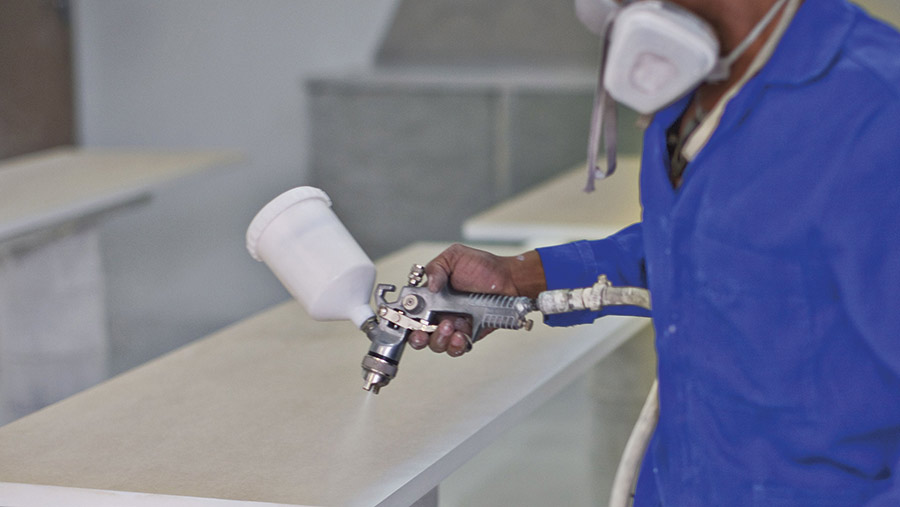Insurance tips for new farm enterprises and diversifications
 © WestEnd61/REX/Shutterstock
© WestEnd61/REX/Shutterstock Farm insurance covers the policyholder only for the business of farming, so the first rule on diversifying is to inform your insurer or broker of any changes or plans to move away from straight farming activities on your land or in your buildings.
One of the most common types of claim involving farm diversification is for fire in buildings which are often let to tenants running a wide range of businesses, says Charles Foster, head of the rural division of broker Lycetts.
“This demonstrates the importance of the farmer knowing about and understanding the tenant’s activities. Often the farmer doesn’t really recognise the risks of other activities. Paint spray, for example, is highly flammable.”
Trips and slips by members of the public or other visitors to farms are also a common cause of claims.
See also: Tips for reviewing insurance on arable farms
New employers’ liability considerations are likely to arise with any diversification as it will bring new risks.
It will also be important to keep reviewing insurance cover as a business grows – some diversifications take off quickly, so limits and cover may need more frequent review than annually.
In addition, cover to protect interruption of the business and therefore its income may become more important, especially where the diversification grows quickly and becomes a significant part of income.
This type of cover is known by many terms including consequential loss, loss of income, revenue or profit protection.

Farmers should be clear on the fire risks of activities such as spray painting © Cultura/REX/Shutterstock
Change of use of farm buildings
New activities in farm buildings will bring new risks and failure to inform the insurer can result in loss of cover. Public liability cover is likely to need reviewing, not only because of the risk posed by any new activity but also increased traffic and pedestrian movement.
It’s important when letting buildings that the responsibilities of landlord and tenant are clear – generally, the landlord will insure the fabric of the building, while the tenant is responsible for their own equipment, staff and products and for complying with the terms of the lease in general.
“A lease may specify for example that certain types of waste must be removed from the site daily. It’s not enough to assume this is being done – check that it is being done.”
Tourism-related businesses
From cafes, restaurants and shops to campsites and adventure trails, getting the public on to farms can be a profitable move.
Standard farm insurance cover, such as employers’ liability, public liability and cover for machinery is likely to need to be extended to cover the new business.
“New risks will centre on health and safety,” says Mr Foster, with measures needed to ensure a safe environment, for example from adequate signage to securing access to potentially dangerous areas.
“The danger of public injury becomes a serious consideration. These risks can range from simple slips and trips to more serious injuries from activities such as use of bouncy castles or zip wires.”
Public liability insurance levels should be reviewed and take account of changes in the Ogden rate (a recent review of the sums to be awarded for injury) and increases in potential compensation payments for serious injuries.
Farm policies often have standard £10m limits each for public and product liability but some insurers are advising these are doubled following the recent review.
Many diversifications will lead to large sums of cash being taken, stored and transported so this additional risk needs to be covered. “Any half decent policy will be extendable to cover cash, in transit and kept overnight or out of hours,” says Mr Foster.
Food and drink production
The insurance implications of some areas of diversification are obvious – anything that involves food production beyond common raw, unprocessed farm commodities is likely to need additional cover, especially in the area of product liability where claims for resulting illness and recalls can be extremely costly.
“The further you move from basic farm commodity production, the more important it is your insurer is informed of what you are doing,” says Mr Foster.
“It’s important to know the regulations, requirements, and any licences or permissions needed and to be able to demonstrate that you have complied with requirements. Being able to show this will help in defending any claims.”
The value of product in stock will also need to be covered and kept under review as a business grows.
Contracting
While some farm policies allow for an element of contracting, disclosure of contracting activities to the insurer is vital, says Mr Foster. Public liability and business interruption cover may need extending, with spray drift one of the most common types of claims against contractors.
“Consideration should also be given to the potential risk of the acts of a contractor jeopardising the subsidy entitlement of the owner. This also applies to land let for shooting.”
Renewable energy
In addition to insuring against standard risks such as fire and storm damage, manufacturing standards within the renewable sector can vary considerably with a cheaper plant, in some cases, being prone to mechanical breakdown, warns Mr Foster.
“Insurance should be considered against loss of income. In contrast to typical manufacturing equipment, insurance premiums can be based upon the quality of the installation.”
Non-standard crops
Anyone approached to trial genetically modified crops should check first with their insurer as most policies will exclude them, says Mr Foster.
Diversification insurance checklist
- Keep insurer or broker informed of new activities/enterprises
- If letting buildings, know what’s going on inside them and assess risks
- Check that tenants and contractors have adequate insurance cover for their activities
- Trips and slips by members of the public or other visitors to farms are a common cause of claims – assess risks, use good signposting and ensure public is kept away from dangerous areas
- Review cover for diversified businesses frequently
- Awards for injury are rising – check public and product liability cover is adequate
- Consider loss of income/revenue/profit/consequential loss cover
